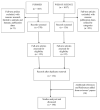Eukaryotic and Prokaryotic Microbiota Interactions
- PMID: 33348551
- PMCID: PMC7767281
- DOI: 10.3390/microorganisms8122018
Eukaryotic and Prokaryotic Microbiota Interactions
Abstract
The nature of the relationship between the communities of microorganisms making up the microbiota in and on a host body has been increasingly explored in recent years. Microorganisms, including bacteria, archaea, viruses, parasites and fungi, have often long co-evolved with their hosts. In human, the structure and diversity of microbiota vary according to the host's immunity, diet, environment, age, physiological and metabolic status, medical practices (e.g., antibiotic treatment), climate, season and host genetics. The recent advent of next generation sequencing (NGS) technologies enhanced observational capacities and allowed for a better understanding of the relationship between distinct microorganisms within microbiota. The interaction between the host and their microbiota has become a field of research into microorganisms with therapeutic and preventive interest for public health applications. This review aims at assessing the current knowledge on interactions between prokaryotic and eukaryotic communities. After a brief description of the metagenomic methods used in the studies were analysed, we summarise the findings of available publications describing the interaction between the bacterial communities and protozoa, helminths and fungi, either in vitro, in experimental models, or in humans. Overall, we observed the existence of a beneficial effect in situations where some microorganisms can improve the health status of the host, while the presence of other microorganisms has been associated with pathologies, resulting in an adverse effect on human health.
Keywords: NGS; culturomics; host; interactions; metabarcoding; metagenomics; microbiota; mycobiota.
Conflict of interest statement
The authors declare no conflict of interest.
Figures
References
Publication types
LinkOut - more resources
Full Text Sources



